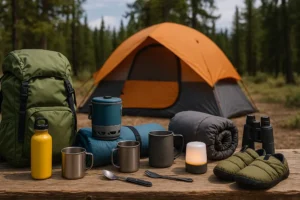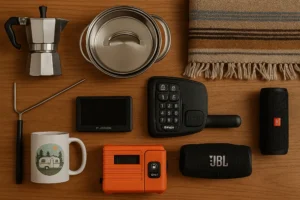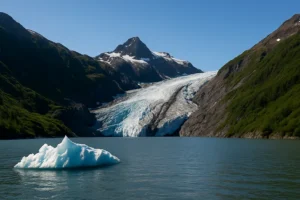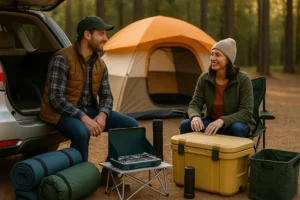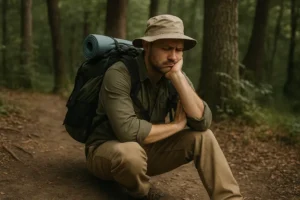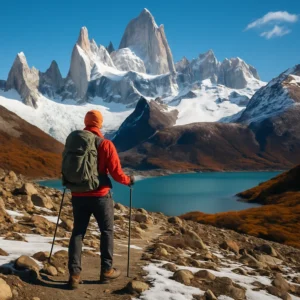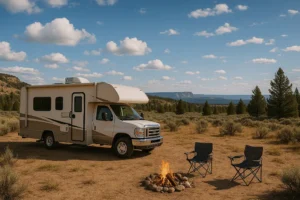Stepping onto a trail is one of the simplest joys in life. Whether you’re heading out for a quick two-hour loop or tackling a sunrise-to-sunset mountain trek, being prepared can make or break your experience. And that’s where the question comes in: what to bring on a day hike?
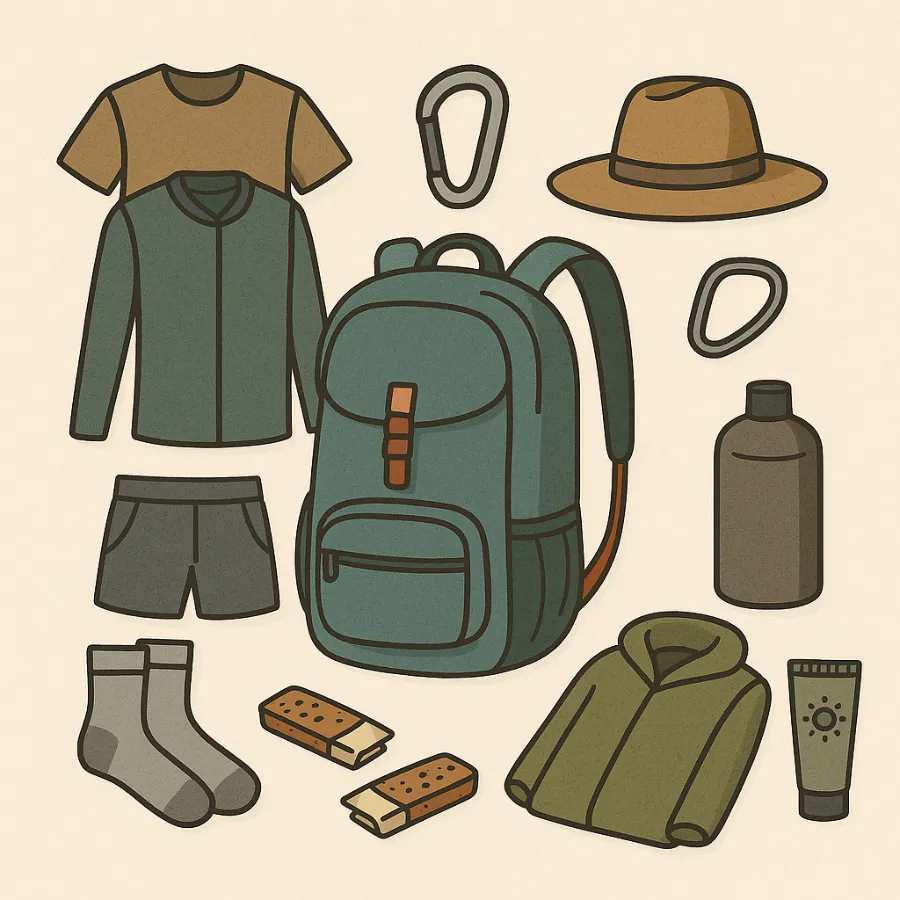
The short answer: not everything in your gear closet. But not just your water bottle and sneakers, either. The right setup balances safety, comfort, and efficiency—enough to handle surprises, but not so much that your pack feels like a lead weight. Let’s break it down step by step.
Choosing the Right Daypack
Your daypack is your trail command center. It carries every essential and keeps your hands free to scramble, snap photos, or steady yourself on rocky paths.
For most people, a 10–30 liter pack hits the sweet spot.
- Under 15 liters: great for short, local hikes.
- 20–25 liters: ideal for half- to full-day hikes with food, extra clothing, and safety gear.
- 30 liters: for longer treks, shoulder-season hikes, or when carrying gear for kids or dogs.
Look for features like:
- A hydration reservoir sleeve (game changer for sipping water on the go)
- Padded hip belt (shifts weight off your shoulders)
- Multiple compartments (keeps first-aid separate from snacks)
- Built-in rain cover (especially for unpredictable weather)
Clothing and Footwear
Trail conditions can change quickly, so your clothes should adapt just as fast. The golden rule is layering: base, mid, and outer.
Base Layer
This is what sits next to your skin, so choose moisture-wicking fabrics (synthetic or merino wool). Avoid cotton—it holds sweat and chills you.
Mid Layer
Think warmth. A fleece or light insulated jacket keeps you comfortable if the temperature drops.
Outer Layer
A rain jacket or windbreaker is crucial. Weather can turn without warning, and you’ll be glad you have protection.
Footwear
- Trail runners: lightweight, breathable, quick-drying—perfect for well-maintained trails.
- Hiking shoes: durable and stable, good for mixed terrain.
- Boots: provide ankle support and traction for rocky, muddy, or snowy trails.
Pair any footwear with synthetic or wool socks to avoid blisters. Pack an extra pair for longer hikes—your feet will thank you.
Food and Water
Nothing derails a hike like low energy or dehydration.
How Much Water?
A general rule is 1 liter per person per 2 hours. Adjust based on temperature, terrain, and your personal needs. If the trail has water sources, bring a lightweight filter or purification tablets so you can safely refill.
Food for Fuel
Pack snacks that are calorie-dense, easy to eat, and won’t get squished:
- Energy bars
- Trail mix and nuts
- Jerky
- Dried fruit
- Peanut butter wraps or sandwiches
For hikes that cross mealtimes, a simple lunch—like a sturdy sandwich or a wrap—keeps morale high. Always pack extra food in case your hike runs longer than planned.
Navigation Tools
The most confident hikers can still take a wrong turn. Navigation is one of the Ten Essentials for a reason.
- Map and compass: lightweight, battery-free backup.
- GPS or altimeter watch: useful for tracking progress.
- Smartphone apps: AllTrails, Gaia, or onX Backcountry are popular choices. Just download maps ahead of time in case service drops.
Pro tip: Tell someone your route and expected return time before you hit the trail.
First Aid and Emergency Gear
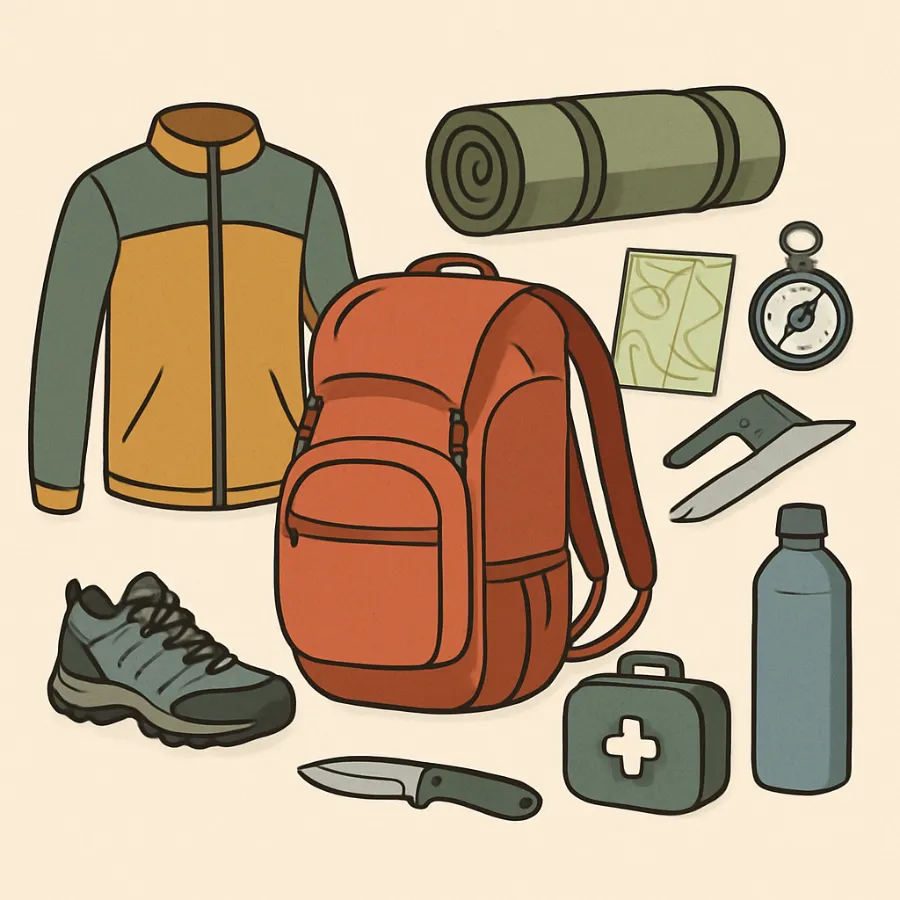
Even small scrapes can become big problems in the backcountry. Pack a compact first-aid kit with:
- Bandages and blister pads
- Antiseptic wipes
- Pain relievers
- Tweezers
- Any personal medications
Beyond first aid, add:
- Headlamp or flashlight (with extra batteries)
- Firestarter or lighter
- Emergency shelter (lightweight bivy or space blanket)
- Whistle (three blasts = distress signal)
These items don’t take up much space but can save your life.
Sun and Weather Protection
You might not notice it while hiking, but hours in the sun add up. Protect yourself with:
- Sunscreen (SPF 30 or higher, sweat-resistant)
- Sunglasses with UV protection
- Hat or cap for face and neck coverage
- SPF lip balm
If there’s a chance of rain or cold, add:
- Rain jacket and pants
- Lightweight gloves and beanie
Tools & Repair Items
A few small tools can turn a potential problem into a non-event.
- Multi-tool or knife: handy for cutting, fixing, or opening food packs.
- Gear repair kit: duct tape, zip ties, safety pins, and cord.
These weigh almost nothing but solve dozens of trail annoyances.
Hygiene and Health Essentials
Nature calls—and so does basic hygiene. Bring:
- Hand sanitizer
- Toilet paper or a pee rag
- Sealable bag to pack out waste (Leave No Trace principle)
- Menstrual products if needed
- Insect repellent (especially in summer)
- Baby wipes for a quick refresh
Optional Extras
Not everything is strictly necessary, but some extras can make your hike better:
- Trekking poles: reduce strain on knees and help with balance.
- Camera or binoculars: for those wow moments.
- Field guide: identify wildflowers, birds, or geology along the trail.
- Portable charger: if you’re relying on your phone for navigation.
Packing Tips
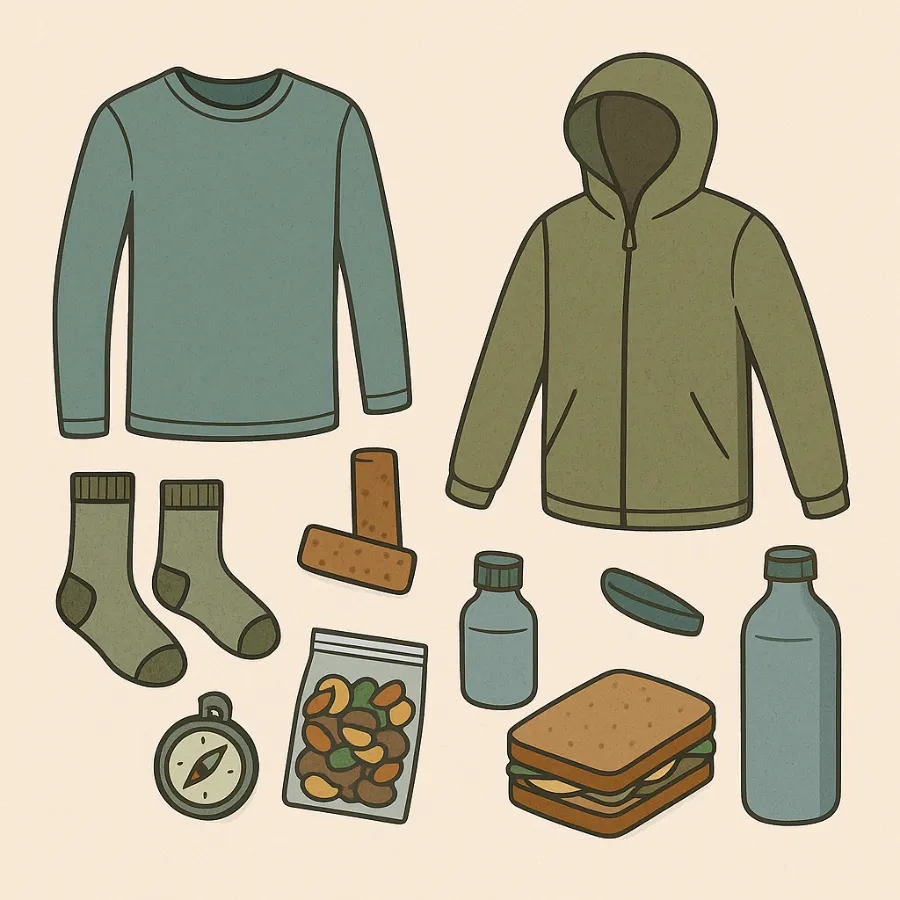
How you pack matters as much as what you pack.
- Keep heavier items close to your spine to maintain balance.
- Place frequently used items (snacks, map, sunscreen) in outer pockets.
- Waterproof your essentials with a dry bag or trash liner inside your pack.
A well-packed bag feels lighter and makes everything easier to access.
Final Thoughts
So, what to bring on a day hike? The essentials are simple: a comfortable pack, layers you can adjust, food and water, navigation tools, first aid, and sun protection. From there, tailor your list based on the trail, weather, and personal comfort.
The goal isn’t to carry everything—it’s to carry exactly what you need to stay safe, comfortable, and ready for the unexpected.
Every hike teaches you something new about what works for you. Start with this checklist, then refine it as you gain more experience. With the right gear in your pack, you’ll step onto the trail with confidence—and come back with energy to plan your next adventure.



